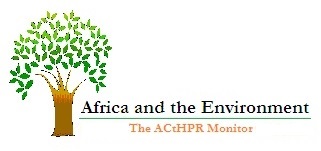 As readers may know, this summer at the 14th colloquium of the IUCN Academy of Environmental Law I gave a presentation on the protection afforded to indigenous peoples under the African Charter and the role that the Court and the Commission can play in the protection of their land and environment. My presentation, which I have posted here, stoked some very interesting debate amongst those attending on the role of the African human rights system and the need to balance the interests of all.
As readers may know, this summer at the 14th colloquium of the IUCN Academy of Environmental Law I gave a presentation on the protection afforded to indigenous peoples under the African Charter and the role that the Court and the Commission can play in the protection of their land and environment. My presentation, which I have posted here, stoked some very interesting debate amongst those attending on the role of the African human rights system and the need to balance the interests of all.
With this in mind, I am delighted to be joined by Daniel Kobei and Lucy Claridge for a round-table discussion on the Court, the Commission and the protection of indigenous peoples’ rights. Both Daniel and Lucy have been heavily involved in a pioneering case on this issue before the Court, whilst Lucy has also worked on the first Commission case recognising indigenous peoples’ rights in Africa. Daniel is Executive Director of the Ogiek Peoples’ Development Program, a Kenyan-based NGO, Vice-Chairman of the Hunter-Gatherers Forum (HUGAFO) and Secretary of the Ogiek Council of Elders. Daniel has been at the forefront of the Ogiek case before the Commission and the Court since 2009. Lucy is Legal Director at Minority Rights Group International and runs MRG’s Legal Department. She litigated both the Ogiek case at the Commission and the Court as well as being the lead lawyer working with Kenya’s Endorois since 2009.
As a brief introduction for readers who may be unfamiliar with the provisions of the Charter and the cases discussed, Articles 19 to 24 of the African Charter are unique in that they specifically protect the rights of ‘peoples’, as opposed to individuals. Amongst other rights, these articles give ‘peoples’ the right to self-determination, the right to free disposal of wealth and natural resources, the right to economic, social and cultural development and the right to a general satisfactory environment. All these Articles are particularly relevant to the two cases discussed below: the Commission case CEMIRIDE and Minority Rights Group International (on behalf of Endorois Welfare Council) v. Kenya (276/2003), which we will refer to as the “Endorois Case” and the Court case of African Commission v Kenya (006/2012) that we will refer to as the “Ogiek Case”.
Oliver Windridge (OW): Lucy, can you first introduce the Endorois and Ogiek cases?
Lucy Claridge (LC): The Endorois are a semi-nomadic pastoralist people numbering approximately 60,000 who have lived in and around the Lake Bogoria area of Kenya’s Rift Valley for centuries. In the 1970s, they were evicted from their ancestral lands by the Kenyan Government and the land became Game Reserve, without consultation or compensation. This has had a significant negative impact on their livelihoods. Having failed to find any justice in their national courts, the Endorois took their case – with MRG’s assistance – to the African Commission, alleging violations of the African Charter resulting from their displacement from their ancestral lands and Kenya’s failure to adequately compensate them. In February 2010, the Commission found in their favour, concluding that Kenya was in violation of Articles 1, 8, 14, 17, 21 and 22 of the Charter. The ruling created a major precedent as it represented the first time that indigenous peoples’ rights over the land and natural resources had been legally recognised in Africa. The case was also the first to adjudicate on the right to development, finding that the Kenyan government’s failure to consult or compensate the Endorois in relation to the use of their land amounted to a violation of this right. In doing so, the body has provided a strong incentive to all governments to regard their indigenous peoples as stakeholders in their development projects and to involve them in the development process. Finally, the Commission found violations of the Endorois’ religious and cultural rights because they could no longer access their ancestral lands to practise traditional ceremonies and rituals. In affirming Endorois’ collective right to ancestral lands, the Commission’s decision has not only awarded a full remedy to the Endorois community but has also significantly contributed to a better understanding and greater acceptance of indigenous rights in Africa.
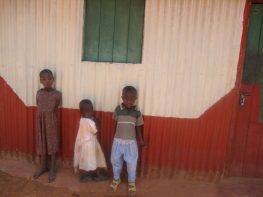
Within the Endorois ruling, the Commission made a number of recommendations to the Kenyan Government, requiring that the Government recognise and restitute the ownership rights of the Endorois, allow access to other important sites in the surrounding areas, pay compensation for the loss suffered, pay royalties for existing economic activities, grant registration of the Endorois Welfare Committee, engage with the Endorois in the effective implementation of the recommendations and provide a progress report back to the Commission within three months. Sadly, it appears that Kenya has done very little to implement the Commission’s recommendations since the 2010 ruling. Indeed, in November 2013, at the Complainants’ request, the Commission issued a resolution (the first of its kind) calling on Kenya to implement its recommendations.
Turning now to the Ogiek case, the Ogiek are a hunter-gatherer community of approximately 35,000 people mainly living in the Mau Forest, in Kenya. For many years they have either been evicted or repeatedly threatened with eviction from their ancestral land by the Kenyan Government. A vast number of cases had already been lodged in the Kenyan courts challenging these evictions but these have largely been either unsuccessful, or remain pending before the Court due to lack of engagement by the Government and lack of progress within Kenya’s judicial system. In 2009, facing another eviction, the Ogiek Peoples’ Development Program started a case before the Commission, arguing that this eviction will have far reaching consequences on the political, social and economic survival of the Ogiek community. Specifically, they submit that the Government is in violations of Articles 1, 2, 4, 8, 14, 17 , 21 and 22 of the Charter. MRG became involved in the case in 2010 and has taking the lead role in litigating it before the Commission and the Court.
In 2012, the case was referred to the Court on the basis that it evinced serious and mass human rights violations. The case has provided the first opportunity for the Court to deal with a case involving indigenous peoples’ rights. It is also only the second case before the Court which started life as an individual communication before the Commission, and the only one to reach hearing stage, thus creating significant procedural precedent, since it tests out the Commission-Court referral procedure.
On 15th March 2013, the African Court issued a provisional measures order under Article 27(2) of the Court’s Protocol mirroring the order already issued by the Commission in 2009, and requiring the Government of Kenya to immediately reinstate restrictions on the transfer of land in the Mau Forest and not take any steps which would prejudice the main application before the Court. This provisional measures order remains in place but unfortunately has not been respected by the Kenyan Government.
OW: Daniel, can you explain a little more about the Ogiek people and their land?
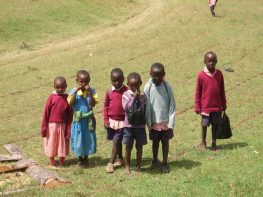
Daniel Kobei (DK): The Ogiek are some of Africa’s last remaining forest dwellers. Traditionally honey-gatherers, they survive mainly on wild fruits and roots, game hunting and traditional bee-keeping. The Ogiek have lived since time immemorial in Kenya’s Mau Forest, and are friendly to the environment on which they depend. They have a unique way of life well-adapted to the forest. To them, the Mau Forest is a home, school, hospital, cultural identity and way of life that gives them pride and destiny. In fact, the term ‘Ogiek’ literally means ‘caretaker of all plants and wild animals’. Unsurprisingly, the survival of the indigenous Mau Forest is therefore inextricably linked with the survival of the Ogiek.
Since independence, and indeed prior to it, the Ogiek have been routinely subjected to arbitrary forced evictions from their ancestral land by the Kenyan Government, without consultation or compensation. The Ogiek’s rights over their traditionally owned lands have been systematically denied and ignored. The frequent evictions led to Ogiek losing their property, increased illiteracy and women being subjected to untold suffering. The evictions have also caused arbitrary loss of the Ogiek language in some parts due to assimilation with other peoples. The Kenyan Government has allocated land to third parties, including political allies[1], and permitted substantial commercial logging to take place, without sharing any of the benefits with the Ogiek. The eviction of the Ogiek from their ancestral land and the refusal to allow them access to their spiritual home has prevented the Ogiek from practising their traditional cultural and religious practices. The culmination of all these actions has resulted in the Ogiek being prevented from practising their traditional hunter-gatherer way of life, thus threatening their very existence.
OW: Lucy, can you tell us a little more about Minority Rights Group International (MRG)?
LC: MRG is an international NGO working to protect and promote the rights of minorities and indigenous peoples worldwide. Minorities and indigenous communities represent some of the world’s most vulnerable and marginalised people, suffering disproportionately from direct abuse and infringement of their individual and collective rights, but also from invisibility in the social, economic and political spheres of their respective countries. Minority and indigenous communities often lack awareness of their rights and/or lack the necessary know-how or resources to advocate for their causes before official channels. With headquarters in London, as well as offices in Uganda and Hungary and numerous other staff and consultants around the world, MRG empowers minority and indigenous communities to seek their rights, through a combination of advocacy, litigation and capacity building.

MRG’s strategic litigation programme was established in 2002. We assist minority and indigenous communities to bring test cases before international and regional human rights bodies with the specific aim of establishing precedents that will have far-reaching effects, and thus positively influence the position of other minority and indigenous groups suffering similar violations in the same or other countries. This litigation is accompanied by holistic advocacy work which is carefully developed in conjunction with the community and local lawyer(s). We also build the capacity of local communities and those representing them to ensure that these communities are able to demand the implementation of their rights on their own, outside the framework of this Programme, including through the establishment of trained paralegal networks.
OW: Lucy, as you have mentioned the Endorois case was decided in 2010, with a finding that Kenya had violated a number of articles of the African Charter. What is the current situation in terms of Kenya complying with the Commission’s findings?
LC: Unfortunately, the implementation of the Endorois ruling by the Kenyan Government has been slow, despite positive statements on implementation being made by the Minister of Lands in 2010 and the Minister of Justice, in 2012. We have continued to work with the Endorois, assisting them with international, regional and national advocacy seeking enforcement. The Endorois do now enjoy access to their land at Lake Bogoria, although this is an informal arrangement: full formal restitution of the land is yet to take place. The Endorois Welfare Council has also been registered. However, the Endorois have still not been compensated for the loss of their property and the violation of other rights, and have received only minimal payment of royalties from the use of their land by others.
In addition, steps have also been taken by the Government which would appear to violate the ruling. For example, the Endorois were surprised to learn in 2011 that UNESCO had included Lake Bogoria on the World Heritage List, a designation which could greatly affect the Endorois’ rights over their land – and on which they were not consulted. Following complaints by the Endorois, the African Commission expressed its concern in a resolution calling on the government of Kenya and the World Heritage Committee to revise its policies to include participation by indigenous peoples through their own representatives. In May 2014, representatives from KWS, the Baringo County Council, the Kenyan Commission to UNESCO, and the Endorois Welfare Council convened to sign a memorandum of understanding which recognised Lake Bogoria as Endorois ancestral land and required Endorois inclusion in management of the land, and they are now working together on a joint management plan of the Lake Bogoria Game Reserve. The World Heritage Committee has also required the government of Kenya to include the Endorois in management and benefit-sharing of Lake Bogoria.
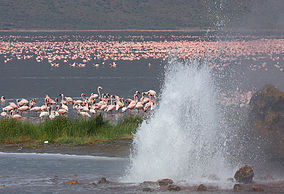
The non-implementation of the decision is not perhaps unusual in the African context, given the controversy and conflict surrounding land rights, but comes in spite of considerable efforts by MRG, working with the Endorois and the Commission, to obtain its enforcement. In April 2013, the Commission held an implementation hearing pursuant to Rule 112(6) at which the Government was required to present the Commission with a roadmap to implementation, another obligation it failed to meet. The hearing was followed by a meeting of the Working Group on Indigenous Populations (WGIP) in Nairobi in September 2013. In November 2013, at MRG’s request, the African Commission issued a resolution calling on the government of Kenya to take concrete steps towards implementation and to immediately file a comprehensive report on implementation with the Commission.
In September 2014, the Kenyan Government established a Task Force with the specific mandate of implementing the ruling, although concerns with its Terms of Reference – which seem to be addressing whether to implement, rather than how – would suggest that it is less than genuine. The mandate of the Task Force has now expired, and the Task Force has not reached a conclusion.
OW: Lucy, have the Endorois considered applying to transfer their case to the Court too?
LC: The Endorois have considered applying to transfer their case to the Court pursuant to Rule 118(1). However, there are concerns over whether this would lead to a de novo examination of the Endorois case by the Court and, until the Ogiek case is decided, we do not know what the Court’s approach to indigenous peoples’ rights will be. In addition, implementation of the Endorois ruling is clearly only to be achieved practically at the national level, and therefore efforts are currently being focused on national advocacy, rather than regional litigation at the Court.
I should add that MRG and the Endorois have requested several times that the Commission refer the case to the Sub-Committee of the Permanent Representatives Committee and the Executive Council on the Implementation of the Decisions of the African Union, for non-compliance, pursuant to Rule 112(8). This procedure has not yet been used, as far as we are aware, and there is a lack of clarity on the procedure, which might explain why the Commission seems reluctant to use it. We await a decision on this request in the coming months.
OW: Daniel, can you explain how you started working with Minority Rights Group International?
DK: The Ogiek community started working with MRG in 2004 through CEMIRIDE (a Kenyan NGO working with minorities and indigenous peoples and a partner of MRG), who introduced OPDP to MRG. In 2006, OPDP started working closely with MRG directly. Since 2004, Ogiek community members have benefited from training in Geneva and other places on minority rights advocacy and using international human rights mechanisms to protect minority rights. Since 2008, we have been
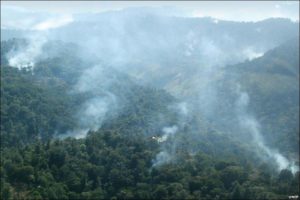
working together on issues including peacebuilding and governance. In the meantime, the non-recognition of Ogiek rights by both the government and other communities in Kenya led them to the corridors of the courts. The cases that they brought, challenging the denial of Ogiek rights, were delayed – leaving the community with no other available option but to proceed to the Commission. In 2009, MRG became involved in this litigation and, since then, has been leading the African Commission and then the African Court case through their Legal Director, Lucy Claridge. Our work with MRG has led to increased partnership with other organisations globally. We are therefore indebted to MRG and Lucy for our tenacious work together.
OW: Daniel and Lucy, the Ogiek case was originally submitted to the Commission then transferred by the Commission to the Court. Was it your intention to persuade the Commission to transfer the case?
LC: The case was transferred by the Commission to the Court pursuant to Rule 118(1) on the basis that it evinced serious and mass human rights violations. This was despite no decision having been taken on admissibility by the Commission. In reaching its decision to refer the case, the Commission took into account a provisional measures order issued in 2009 requiring the Kenyan Government to respect the Ogiek’s rights and which clearly had not been complied with.
DK: It was not our intention to transfer the case – and in fact, we didn’t make the request: the Commission acted sui moto. However, despite some initial concerns amongst the Ogiek community about the development, we were happy for the case to be transferred, since it provides an opportunity to take the Endorois ruling to another level, as well as setting important procedural precedent. We also hoped that the case would move quickly since the Court is a newer body than the Commission with a smaller caseload although, as Lucy explains below, this has not been the experience in practice.
OW: Daniel and Lucy, the Ogiek case was heard in November 2014 and is now awaiting judgment, but in March 2013 the Court ordered provisional measures, preventing the transfer of land subject to the application. How have these measures been upheld?
LC: I’m sorry to say that the Kenyan Government has consistently and repeatedly failed to comply with the Court’s provisional measures order.
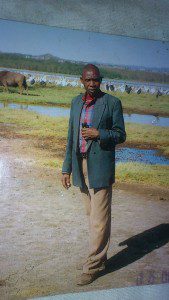
Firstly, Ogiek people continue to be unlawfully evicted from their land with the complicity of Government officials, and are often subsequently charged with trespass on their own land and/or experience arbitrary harassment and detention. Earlier this year, an Ogiek elder was shot and killed during one of these altercations, yet little attempt has been made to investigate the matter or arrest the perpetrator.
In addition, a number of Ogiek activists have suffered violent physical attacks against them because of their advocacy and other work regarding the Ogiek land eviction issue. These attacks appear to be an attempt to silence Ogiek activists in order to prevent them from protesting against the eviction from their ancestral land. Even Daniel has been questioned by the police. Although complaints have been lodged with the local police, they have not been fully investigated.
In addition, Ogiek land in the Mau Forest is still being sold and allocated to non-Ogiek, in clear violation of the court order.
Finally, despite a clear Court order that the Respondent Government should “refrain from any act or thing that would or might irreparably prejudice the main application before the Court, until the final determination of the said application”, logging continues unabated in the Mau Forest.
MRG and OPDP have provided ample evidence of these violations to the Commission, which in turn has submitted the same to the Court. In February 2014, the non-compliance was the subject of an interlocutory application to the Court by the Applicant, requesting the Court to issue a finding of non-compliance against the Kenyan Government. Further, during the November 2014 hearing of the case, MRG was allowed to make an oral intervention in the case pursuant to Rule 29(3)(c), as one of the original Complainants in the case (the first time that such an intervention has been allowed). This oral intervention focused on these concerning violations of the provisional measures order.
It is disappointing that the Court has not taken any action against the Government as a result of the non-compliance. In my view, this undermines the role that the Court could play in upholding human rights in Africa. This inaction is also surprising since the Court has previously clarified, in its 2013 interim report to the Executive Council on Libya’s non-compliance with such an order, that a provisional measures order “is as binding as any judgment of the Court” and failure to report in compliance with that Order “is the same as failure to comply with a judgment of the Court”. The Court noted in its 2013 report that “the failure of Libya not to comply with the Order of the Court threatens the very foundation of the existence of the Court as a judicial arm of the African Union. It erodes public confidence in our judicial system and mobilises negative public precedent about the ability of the Court to protect human rights on the continent…. and puts into question the credible utility of..[the Court]”. Arguably, the same principles should apply to the Respondent Government’s actions on this occasion.
OW: Has there been much communication between the Ogiek and Endorois people over their respective cases?
DK: The Endorois Welfare Council have given us great assistance in mentoring Ogiek on the long journey to the African Court through the ACHPR. OPDP and EWC regularly exchange experiences, approaches and ideas on the many issues that affect both our communities since we have a lot in common, especially regarding our land and natural resources. We share partners and we meet frequently since our offices are in the same town in Nakuru county, Kenya. The Endorois are seen as the champions of the Commission and we are seen as the champions of the African Court as far as African indigenous communities are concerned.
OW: Widening the focus out from the Endorois and Ogiek cases, can you comment on the protection of people and their land and environment in Africa? What is the current situation?
LC: In many countries throughout Africa, and indeed throughout the world, land rights and security of tenure constitute the basis for livelihood, housing and development for a large percentage of the population. Indigenous peoples in particular have an intimate relationship with the land that they have occupied and used for long periods of time, and they depend on it for food, shelter, identity and survival. Access and rights over lands also frequently operate within a hierarchical system in which the poorest, least educated, and otherwise disadvantaged (including minorities and indigenous communities) do not hold security of land tenure, thus making evictions more likely. Such evictions will result in violations of their rights to livelihood, religion, culture, property and natural resources, each of which impacts upon their capacity for meaningful development.
At the same time, demands and competition for access to land are growing as individuals, communities, the private sector, the state and foreign actors seek to use and benefit from these resources for different, often opposing, purposes. This increased pressure on land, including large-scale foreign agricultural investments in developing countries, has heightened the need for respect of indigenous communities’ rights over their ancestral lands. International law, including the Endorois case, has established that they should be fully consulted on use of their land, without coercion, and compensated should they agree to such usage (the principle of free prior and informed consent). Governments, foreign investors and private actors need to ensure that this principle is fully respected. It is disappointing, for example, that the World Bank recently downgraded its own safeguards protecting indigenous peoples’ land rights.
In addition, the role that indigenous peoples can and should play in conserving land needs to be fully recognised and respected. This is an issue we argued in the Ogiek case in particular. Indigenous peoples’ intimate relationship with the land that they have occupied and used for long periods of time, and their dependence on it for food, shelter, identity and survival, has ensured that this relationship has been rooted in respect for that land and the need to conserve it – whether it is savannah or forest.
Indigenous peoples traditionally develop a set of conservation measures that are passed down from one generation to the next, and as a result they should be seen as the best people to conserve that land. However, governments and international investors usually only view conservation of ecosystems as possible if human habitation is limited on those sites – or at least, use it as a reason to evict them.
The role of indigenous peoples, including the Ogiek, in the conservation of land and natural resources has been recognised by a number of international bodies, including the UN Committee on the Elimination of Racial Discrimination (“CERD”), and by conservation organisations themselves such as the International Union for Nature Conservation (IUCN). The common finding is that where local communities and forest-dwelling groups can receive a share in the long-term benefits of the forest land, in particular through community land tenure (as was the case for the Ogiek prior to colonisation and independence), there is an incentive for conservation and sustainable use.
OW: How can the African human rights system help? Do you see the African Court as being an effective arena for peoples’ rights?

LC: I would like to be able to place full confidence in the African Court as an effective body to protect peoples’ rights, but unfortunately my experience with the Ogiek case has created some doubts.
Firstly, as I set out above, it is very disappointing that the Court has not condemned the Government of Kenya for non-compliance with the provisional measures order, despite previously taking such action in relation to Libya.
Secondly, it is very concerning that the Court has not yet issued judgment in the case, especially given the deteriorating situation on the ground and the flagrant violations of the provisional measures order by the Kenyan Government. I understand that this is the most complicated case that the Court has ever had to consider: in contrast with previous cases, such as Zongo or Konate for example, it involves 8 alleged violations of the African Charter and a community of 35,000; it also concerns a hugely controversial issue which will have wide ramifications throughout Africa. However, the Court has had ample time to consider the facts and arguments, since merits submissions were lodged with the Court in late 2013, and the hearing took place in November 2014. A delay of 2 years is unacceptable and arguably violates the Charter’s own fair trial protections. Further, the Ogiek are understandably beginning to lose faith that they will ever be afforded the justice they deserve. We are all hopeful that the Court will adopt a strong judgment, in line with the approach that it has been taking to date, but in the interests of the administration of justice, it needs to issue its ruling soon.
Finally, some fine-tuning of the Court-Commission referral procedure is needed. Although MRG, OPDP and the Ogiek were the original Complainants before the Court, when the case was referred to the Court, the Commission became the Applicant. This effectively side-lined the Ogiek, the victims in this case and, although MRG and OPDP enjoyed an excellent working relationship with the Commission at a practical level, meant that they were not informed of key developments in the case. In addition, in early 2015, the Court decided to recommend amicable settlement to the parties; an option which the Commission accepted, against the Ogiek’s wishes. Although this eventually led to nothing, it caused unnecessary and frustrating delays. The Court and the Commission need to ensure that the interests of the victims are fully represented and included throughout the proceedings.
OW: Following my presentation on the Charter, Court and Commission there was a very interesting debate amongst those attending the session. There seemed to be agreement that the rights of peoples’ should be protected under the African Charter, but also that the rights of peoples’ groups should be balanced against the use and exploitation of natural resources for the good of a whole country. Several comments centered on how protection must also allow for development. How do you respond?
LC: This debate is central to both the Endorois and the Ogiek cases. I think it is very important to understand here the concept of ‘development’ and the rights and obligations that this imposes on states.
In the Endorois case, the Commission highlighted two important facets of the right to development, declaring that it is both constitutive and instrumental, or useful as both a means and an end. The right to development therefore incorporates both the right to participate in the development process and the right to a substantive improvement in well-being. Therefore development processes have both procedural and substantive elements.
Recognising the right to development requires fulfilling five main criteria. Development must be equitable, non-discriminatory, participatory, accountable, and transparent. Moreover, the African Commission has emphasised in the Endorois case that the fundamental goal of development is freedom of choice and that it “must be present as a part of the right to development”.
Further, given that development is understood as an improvement in well-being (measured in terms of capabilities), the right to development ensures the provision of resources essential for survival and well-being. Traditional indigenous land use systems have been recognised as crucial to well-being.
Consequently, the right to development is a right held by all peoples to participate in, and to shape, a comprehensive process of economic, social and cultural development in all areas of life. The Endorois case established that the burden to create conditions favourable to that development fall squarely on the shoulders of the Government. The form that such participation must take in any set of circumstances is left unclear by Article 22 and, in particular, it is not clear what level or mechanism of participation is required in respect of non-indigenous African groups. In the Endorois decision, the African Commission made clear that indigenous communities have rights of prior consultation and consent in respect of their traditional lands. The position is given greater clarity by the case-law on indigenous participation rights, as well as the 2007 UN Declaration on the Rights of Indigenous Peoples.
In essence, therefore, the development process itself must protect peoples’ rights: those whose land or natural resources are the subject of potential development must participate in the process, be consulted, and benefit from any development.
OW: Finally, Daniel, what are the future plans for the Ogiek Peoples’ Development Program?

DK: OPDP will work to secure the Ogiek a respectable life and improve all aspects of their life. This includes protecting their rights over land and natural resources, intertwined with all basic needs. I foresee an educated society in which the Ogiek are able to represent themselves in all walks of life and enjoy the serenity of the Mau Forest, making it a natural resource conservation model for other communities to learn from. I anticipate Ogiek being included in development processes as we implement a Court judgment which I hope will be in our favour, in a case which I hope will take legal prominence both locally and internationally. In this way, the Ogiek can finally be a proud community, after all the discrimination we have suffered.
OW: And Lucy, any other Minority Rights Group International legal work you can tell Monitor readers about?
LC: We will continue our work with the Ogiek and the Endorois, and are hopeful that we will obtain judgment in the Ogiek case in 2017. We will also progress our pending Commission case against the Government of DRC, challenging the eviction of indigenous Batwa from their ancestral home in what has now become Kahuzi-Biega National Park. And we are working with the Maasai of Loliondo, Tanzania, who were evicted from their lands in 2006 when it was sold by the Government to a US based safari company: they are litigating the dispute in Tanzania’s courts.
We are also working to challenge the slavery of ethnic Haratine women and children in Mauritania. We started a case before the ACERWC in late 2015 and the case has already been declared admissible, with a merits hearing taking place in October 2016. Unlike other African human rights bodies, the Committee has progressed the case very quickly which is both encouraging and exciting.
We will also continue to work with minority tribes in Botswana who are prevented from standing for political office – membership of the House of Chiefs – purely on the basis of their ethnicity. This complements our work in Bosnia, where we successfully litigated the case of Sejdic and Finci v BiH, in which the ECtHR found that BiH Government in violation of the ECHR since Bosnia’s constitution prevents non-Bosniaks, non-Serbs and non-Croats from standing for election to the Presidency or the House of Peoples.
[1] See eg MFTF Report and TJRC findings – paras 108, 116-117 and 175 of Merits submissions.
